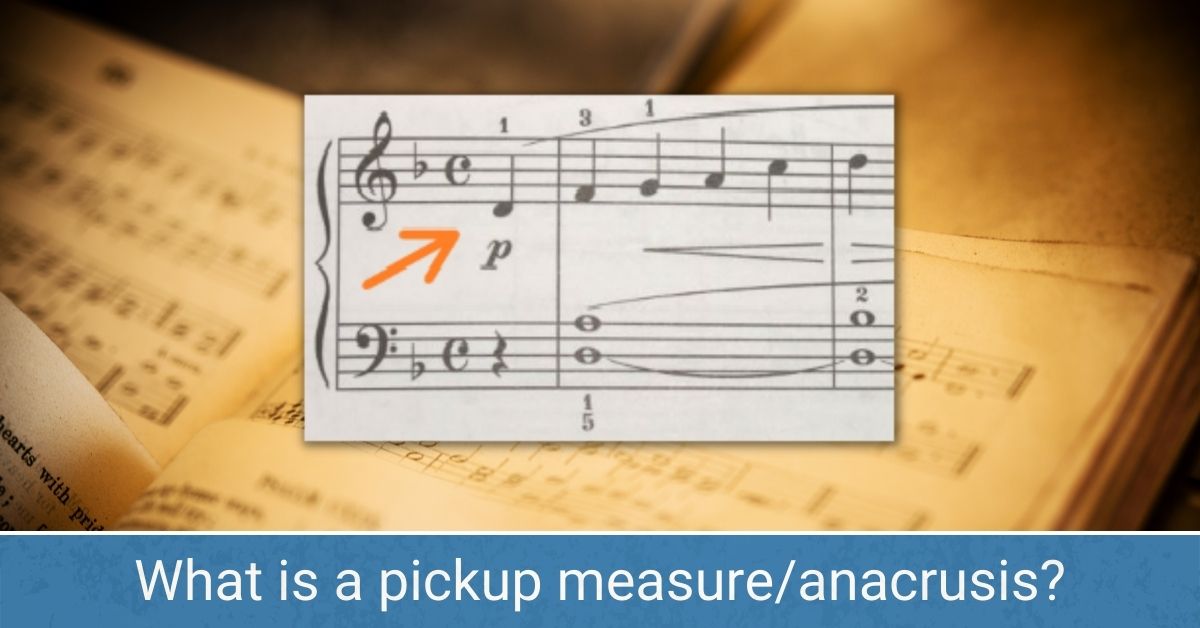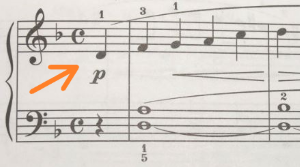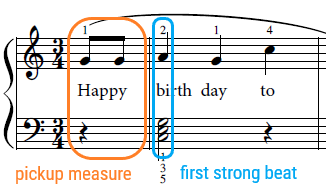Pickup Measures Explained
Published July 30, 2020 by Taras (Terry) Babyuk
Introduction
If you've ever read sheet music, you've undoubtedly come across a pickup measure (also known as anacrusis/upbeat/incomplete measure). And while you may have a general idea of what a pickup measure is, perhaps you still have some unanswered questions about it (I know I did when I began playing the piano!). In this article, you will learn all there is to know about pickup measures so that you can face them confidently in your future musical endeavors. Let's get started!
What is a pickup measure?

A pickup measure (formal name: anacrusis) is a partial measure of notes that precedes the downbeat (strong beat) of the first, full measure. It is sometimes also called an “incomplete measure” or an “upbeat”. The notes of the pickup measure are referred to as “pickup notes”. Because a pickup measure is “incomplete”, it must always be completed at the end of a music piece/section by another partial measure, so that the result is one complete measure.
What is a pickup measure used for?
Composers use pickup measures when they do not want to start a piece of music on a strong (down) beat. Think of the song “Happy Birthday”. The first strong beat in this song actually falls on the “birth” part of the word “birthday”, not on the word “happy”. Because of this, “Happy Birthday” has to start with a pickup measure. Here is what this looks like written down:

Does a pickup measure count as a measure?
No. Because it's not a complete measure, we do not count a pickup measure as the first measure of a piece of music when we are numbering measures. The only exception to this would be if the pickup notes in a measure are preceded by rests, so that the total number of beats add up to a full measure. In that case, we would count this as a full measure and number it measure 1.
How is a pickup measure completed?
Having an “incomplete measure” on our hands kind of gives us the urge to complete it, doesn't it? Well, this is actually something we have to do in music. In fact, every pickup measure must be completed at the end of a piece/section of music so that the total equals to one full measure.
Let's look at a few examples of this from real musical pieces.
Example #1
Source: "Gavotte in A Major" by Daniel Gottlob Turk
In the first photo, we can see that we are in common time (4/4 time). Our pickup measure has two beats, which means we need two more beats to have a complete measure. In the second photo, we complete the pickup measure with the two remaining beats.
Example #2
Source: "Siciliano" by Robert Schumann
In this example, we are in 6/8 time, which means six pulses (think beats) per measure. In the first photo, we have only the first of the six beats needed for a complete measure. In the second photo, our measure is completed with the remaining 5 beats.
More pickup measure examples
Lastly, let's take a look at several examples of anacruses in pieces of different levels of complexity and different time signatures.
Anacrusis in 2/4 time
Source: "The Little Trumpeter" by Robert Fuchs
Anacrusis in 3/4 time
Source: "A Slow Waltz" by Dmitri Kabalevsky
Anacrusis in cut time
Source: "Bouree in G Minor" by Gottfried Heinrich Stolzel
Conclusion
Pickup measures are quite common and I hope that you now have a better understanding of what they are all about. Remember, always begin by looking at your time signature, which tells you how many beats (or pulses, if you are in compound time) a full measure will have. That way, you will immediately be able to tell which measure is not complete.
Just fill out our quick trial lesson form and wait to hear from us within 1-2 business days. If you like your trial lesson, you can sign up for regular lessons with us! Our lessons are available online (Zoom or Skype) as well as in-person if you live close to our location. Start learning your favorite instrument with one of our amazing teachers today!
